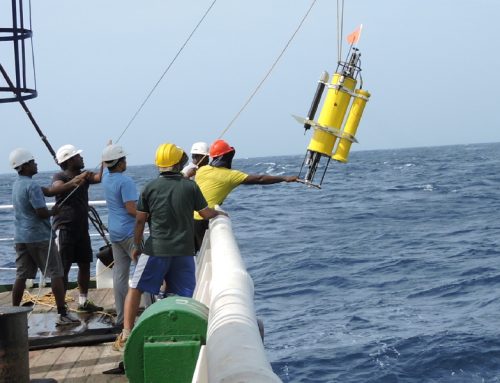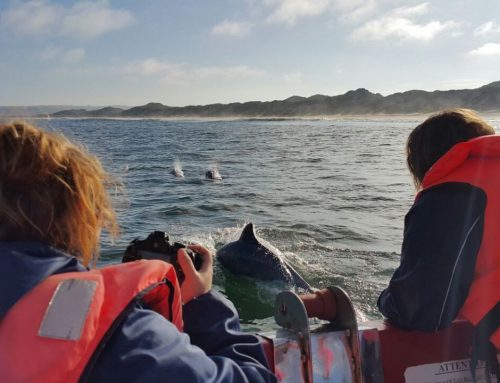 Water, grasslands and grassland birds go together. You simply cannot secure water production for South Africa without securing the grasslands, which are our natural water factories.
Water, grasslands and grassland birds go together. You simply cannot secure water production for South Africa without securing the grasslands, which are our natural water factories.
In the grasslands you find a high number of threatened bird species, which are the perfect indicators of the health of the water factories and their water supply.
With deep understanding of the big picture, the WWF-Nedbank Green Trust has shown long-term foresight in assisting South Africa’s water plan to come together – and there can be few bigger plans.
For the past 12 years the WWF-Nedbank Green Trust has generously supported major grassland, water and grassland bird conservation projects.
Since 2002 the WWF-Nedbank Green Trust has contributed more than R20million to the Enkangala Grassland Project. The Enkangala regions is a high water production area for South Africa, spanning 1.6-million hectares of grasslands across KwaZulu Natal, Mpumalanga and the Free State.
This year the WWF-Nedbank Green Trust is contributing almost R1million to the Important Bird and Biodiversity Areas (IBA) Programme to secure the formal protection of critical grassland habitats in Mpumalanga, Free State and Gauteng, based on indicator bird species.
‘We are currently working with government and private landowners to secure three grassland IBAs in high water yield areas in Mpumalanga and the Free State,’ says BirdLife South Africa’s Daniel Marnewick, who manages the IBA Programme.
These areas are critical for South Africa’s food and water production, without which the economy cannot survive. They provide water for all the cities, agriculture, industries and rural communities in Gauteng, Mpumalanga, Free State and KwaZulu-Natal. These areas also produce much of the country’s food through agriculture, which, under the right management conditions, is very compatible with bird and water conservation.
These areas are:
The Mpumalanga Lakes District Protected Environment: This area is located around the Chrissiesmeer region and was proclaimed in January 2014. Spanning 60 000 hectares, this is South Africa’s largest protected environment to date, with a number of farmers and landowners coming together through the Biodiversity Stewardship Programme.
The Greater Lakenvlei Protected Environment: The intention to declare this area, spanning 14 000 hectares in Mpumalanga’s Steenkampsberg region, a protected environment, has been gazetted, and it is hoped that it will be formally proclaimed within the next couple of months.
These two protected environments, together with a third one in Mpumalanga of 20 000 hectares in the Sheepmoor region, are all substantial natural water storage systems, wetlands and peatlands – some dating back 12 000 years. Lake Chrissie, for example, at 1150 hectares when full, is the largest natural freshwater lake in South Africa.
The Sneeuwberg Protected Environment: This proposed protected environment around Memel in the Free State is another IBA that will span 6000 hectares in its first phase. The intention to declare it a protected environment is still to be gazetted. It will hopefully be proclaimed next year, when the programme will embark on the second phase to expand it.
‘This protected environment, together with the Zeekoevlei Nature Reserve near the border of Mpumalanga and KwaZulu-Natal have large tracts of intact grasslands,’ says Marnewick. ‘We are really fortunate that the agricultural practise of cattle farming in this region is highly compatible with grassland conservation.’
From a bird perspective, 350 of South Africa’s 844 bird species occur in our grasslands, 40% of which are ‘grassland specialists’, meaning they do not live anywhere else.
Amongst these are 29 of the 133 South African Red Data bird species, which occur in grasslands and associated wetlands, including all five of South Africa’s Critically Endangered bird species: the Wattled Crane, Blue Swallow, Rudd’s Lark, Eurasian Bittern and White-winged Flufftail.
All South Africans have a huge responsibility to protect these birds together with the grassland environment in which they live and breed, especially when you consider that there are only about 265 Wattled Cranes left in the wild, and very few breeding pairs – probably only about five in the whole of Mpumalanga.
As part of the grassland conservation programmes, the WWF-Nedbank Green Trust has supported biodiversity stewardship programmes and mining engagement initiatives in these high water production regions.
They are all being targeted by open cast coalmining and other unsustainable land uses that directly threaten the freshwater resources and the livelihoods of the land users, farmers and communities.
‘The current round of funding has allowed us to employ a new Mining Engagement Officer, Nhlanhla Ncube, who started with BirdLife South Africa in October 2014 who will anticipate and manage all mining-related developments in the IBA Grassland areas,’ says Marnewick.
Ncube is ideal for the post as he has a Master’s in Environmental Management and much experience in engaging the mining sector, which he has been doing within WWF-SA for the last couple of years.
The funding is also covering the salary for the regional conservation manager of the IBA Programme in Mpumalanga, Free State and Gauteng, Ernst Retief. An outstanding ornithologist, he has a Master’s degree in Anthropology.
Regarding the Biodiversity Stewardship Programme, landowners who commit their land to a protected environment as part of this programme, are obliged to implement a management plan that includes sustainable land use in terms of livestock grazing and burning practices, no ploughing up of virgin land, and active contribution to the biodiversity conservation of the region.
‘It is extremely important to have the farmers’ and landowners’ support and we are gratified that so many are firmly behind us,’ comments Marnewick.
Information bites:
- The WWF-Nedbank Green Trust is also co-funding BirdLife SA’s revision of the National IBA Directory, which contains all the Important Bird and Biodiversity Areas and the important birds found in them across South Africa. The first directory was published in 1998. The revision will be published in April 2015 and will be available to all. We’ll keep you posted about this.
- As part of the IBA network in the Grasslands Biome, BirdLife South Africa is currently adding the Devon IBA to its list. Spanning 75 633 hectares around the town of Devon, and spanning Mpumalanga and Gauteng, this IBA hosts a number of the larger grassland birds, including the Blue Crane, Secretary Bird, Korhaan and Kori Bustard.
- In 2002 the WWF-Nedbank Green Trust started funding the Enkangala Grassland Project – a high water production area for South Africa, spanning 1.6-million hectares of grasslands across KwaZulu-Natal, Mpumalanga and the Free State. Here, you find the headwaters of the Vaal, Tugela, Usuthu and Pongola Rivers, which provide clean, potable water for Gauteng, Mpumalanga and KwaZulu-Natal.




